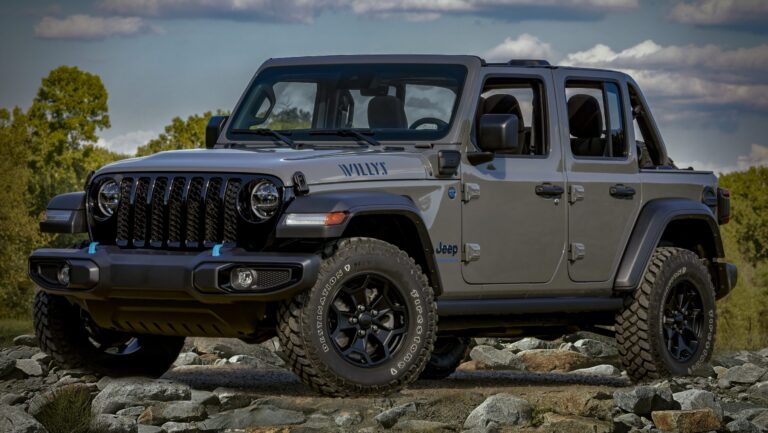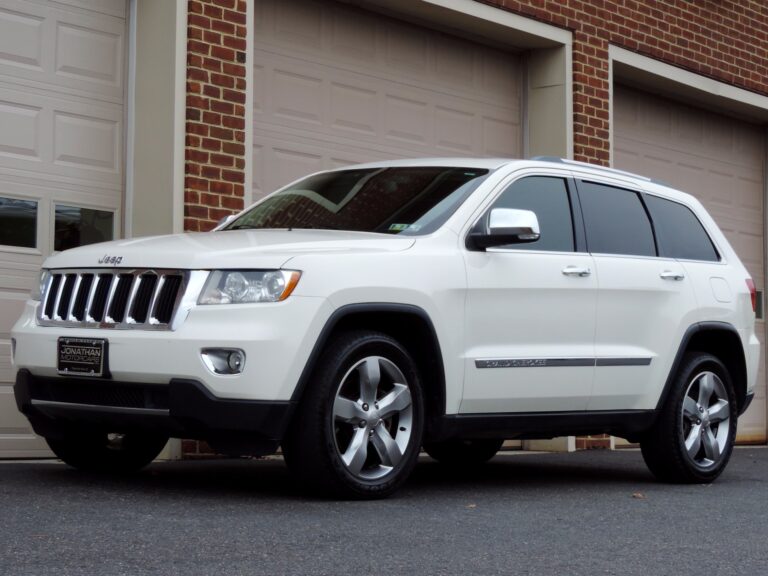Jeep M151 For Sale: Your Ultimate Guide to Owning a Military Icon
Jeep M151 For Sale: Your Ultimate Guide to Owning a Military Icon jeeps.truckstrend.com
The iconic image of a rugged, go-anywhere military vehicle often conjures thoughts of the ubiquitous Jeep. While the Willys MB and Ford GPW defined an era, their successor, the M151 Military Utility Tactical Truck (MUTT), carved its own significant niche in military history. Developed by Ford in the late 1950s, the M151 represented a leap forward in light tactical vehicle design, featuring an innovative independent suspension system and a monocoque body. Today, for enthusiasts and collectors, the phrase "Jeep M151 For Sale" isn’t just an offer; it’s an invitation to own a tangible piece of military heritage, a vehicle that served in conflicts from Vietnam to the Cold War, and continues to intrigue with its unique design and storied past.
This comprehensive guide aims to equip potential buyers with everything they need to know when considering an M151 for sale. From its fascinating history and distinct variants to crucial buying considerations, maintenance insights, and realistic pricing expectations, we delve deep into what it means to acquire and cherish this venerable military workhorse.
Jeep M151 For Sale: Your Ultimate Guide to Owning a Military Icon
A Brief History of the M151 MUTT: Innovation in Utility
The M151 MUTT was designed to replace the aging M38 and M38A1 Jeeps, which were direct descendants of the World War II Willys MB. Ford Motor Company led its development, aiming for a lighter, more capable, and more comfortable vehicle. Introduced in 1959, the M151 was revolutionary for its time. Unlike its predecessors, which used a body-on-frame construction with leaf-spring solid axles, the M151 featured a unitized (monocoque) body and, crucially, four-wheel independent suspension. This design offered superior ride quality, better off-road articulation, and improved stability compared to older designs.
Over its production run, which extended into the 1980s, the M151 saw several significant upgrades:
- M151 (1959-1964): The original model, serving extensively in the early years of the Vietnam War.
- M151A1 (1964-1969): Introduced minor improvements, primarily involving the electrical system and lighting.
- M151A2 (1970-1982): The most significant revision, addressing handling concerns of earlier models. The rear suspension was redesigned with semi-trailing arms, improving stability, especially when cornering at speed. This variant is generally considered the safest and most desirable for civilian ownership.

The M151 served across all branches of the U.S. military and was exported to numerous allied nations. It performed a multitude of roles, from general utility and reconnaissance to carrying weapons systems and serving as an ambulance (M718 and M718A1). Despite its success, the M151 gained a reputation for instability at high speeds, particularly the early A1 models, leading to numerous rollover accidents. This, combined with the U.S. military’s policy of preventing military equipment from falling into civilian hands or being re-militarized, led to a controversial mandate for most M151s to be crushed or cut up before being sold as scrap. This destruction policy has made surviving, legally civilian-owned M151s increasingly rare and valuable.
Why Buy a Jeep M151? The Enduring Appeal of a Military Icon
For many, the decision to seek an M151 for sale goes beyond mere transportation. It’s about owning a piece of history, appreciating engineering, and joining a passionate community.
- Historical Significance: Owning an M151 is akin to owning a tangible piece of military history. These vehicles were frontline workhorses, witnessing pivotal moments and serving those who served.
- Unique Design and Engineering: The M151’s monocoque body and independent suspension set it apart from virtually all other light utility vehicles of its era. This translates to a distinctive driving experience and visual appeal.
- Off-Road Capability: Despite its relatively small size, the M151 is surprisingly capable off-road. Its lightweight nature, good ground clearance, and effective 4×4 system make it agile and effective in challenging terrain.
- Collector’s Item Status: Due to the U.S. government’s destruction policy, legally civilian-owned M151s are finite and becoming rarer. This scarcity contributes to their increasing value as collector’s items.
- Community and Shows: M151 owners are part of a dedicated global community. Forums, clubs, and military vehicle shows offer opportunities to share knowledge, find parts, and showcase these unique vehicles.
- A Conversation Starter: Pulling up in an M151 guarantees attention. It’s a showstopper at car meets, parades, and even just driving down the street.
Understanding the M151 Variants: Choosing Your MUTT
While all M151s share a common lineage, understanding the differences between the main variants is crucial for a potential buyer.
- M151 (Original): The earliest model, identifiable by its simpler suspension setup. While historically significant, it’s the least common and often comes with the most pronounced handling characteristics. Parts specific to this early model can be harder to source.
- M151A1: A modest upgrade from the original. Visually similar to the M151, with minor internal improvements. It shares the same basic rear suspension design as the M151, which was later cited for its "tuck-under" tendency during hard cornering, especially when unloaded.
- M151A2: The most refined and safest variant for civilian use. Its redesigned rear suspension with semi-trailing arms significantly improved handling and stability. This makes the A2 the most sought-after model for general driving and recreational use. Many M151s you find for sale will be A2s, or earlier models that have been upgraded with A2 components.
Other specialized variants like the M825 (recoilless rifle carrier) or M718/M718A1 (ambulance) are much rarer to find for sale and typically command higher prices due to their unique configurations.
What to Look For When Buying an M151: A Comprehensive Buyer’s Guide
Acquiring an M151 is not like buying a typical used car. Due diligence is paramount, particularly concerning legality and condition.
-
Legality and Demilitarization: This is the most critical aspect. Most M151s released by the U.S. government were "demilitarized" by cutting the frame (or unitized body) to prevent them from ever being used militarily again. While this was primarily for export or scrap, some found their way into civilian hands.
- SF97 Form: The official U.S. government form for surplus property. If you’re buying a vehicle released directly from government surplus, ensure it comes with an SF97, which serves as a certificate of ownership and can be used to obtain a civilian title. Critically, many states will only title demilitarized M151s.
- Cut Body/Frame: Inspect for cuts and repairs. While legally required for many surplus M151s, a poorly repaired cut can compromise structural integrity. Understand the specific demilitarization requirements for your state or country. Some non-U.S. government surplus M151s may not have been cut, but their import and registration can be complex.
- State-Specific Laws: Research your local Department of Motor Vehicles (DMV) requirements. Some states are very strict about titling M151s, while others are more lenient, especially if registered as an antique or historical vehicle.
-
Condition Assessment:
- Rust: The M151’s monocoque body is prone to rust, especially in the floor pans, battery box, and lower body panels. Inspect thoroughly, including under the vehicle. Extensive rust can be costly to repair.
- Engine (Ford "Hurricane" 4-Cylinder): Check for oil leaks, excessive smoke from the exhaust (blue for oil, black for rich fuel, white for coolant), and unusual noises. Ensure it starts easily and idles smoothly.
- Drivetrain: Test the 4-speed manual transmission through all gears (both high and low range if possible). Listen for grinding or clunking. Check the transfer case engagement. Inspect drive shafts and universal joints for play.
- Suspension: The independent suspension is a key feature. Look for worn bushings, bent control arms, leaky shocks, and excessive play in ball joints. These components are critical for safe handling.
- Brakes: The M151 uses drum brakes all around. Check for even braking, spongy pedal feel (indicating air or fluid issues), or pulling to one side.
- Electrical System (24-Volt): The M151 operates on a 24-volt system, different from most civilian vehicles. Check all lights, gauges, and accessories. Look for frayed wiring or amateur electrical repairs.
- Completeness: Original military components can be challenging and expensive to source. Check for missing items like the spare tire carrier, pioneering tools (shovel, axe), specific military lights, and canvas top components.
- Originality vs. Restoration: Decide if you want a fully original, unrestored "survivor," a professionally restored vehicle, or a project. Each has different price points and levels of effort required.
-
Documentation: Beyond the SF97 or civilian title, look for service records, previous ownership history, and any photos of restoration if applicable.
-
Test Drive: If possible, take the M151 for a test drive. Pay attention to:
- Steering: Excessive play, pulling to one side.
- Braking: Smoothness, effectiveness.
- Engine Performance: Acceleration, power delivery, overheating.
- Suspension: Any unusual noises over bumps, stability.
- Noise and Vibration: Expect some, but differentiate normal operation from potential issues.
Ownership and Maintenance: Keeping Your MUTT Running
Owning an M151 is a commitment, but a rewarding one. Be prepared for:
- Parts Availability: Common wear items (filters, brake components, basic engine parts) are generally available through specialized military vehicle parts dealers and online forums. However, specific military-spec items or body panels can be scarce and expensive.
- Maintenance Challenges: The 24-volt electrical system can be a learning curve for those unfamiliar. The independent suspension also requires specific knowledge for maintenance and alignment. Rust prevention is an ongoing task.
- Safety Considerations: The M151 lacks modern safety features like airbags, ABS, or stability control. While the M151A2 improved handling, it’s still a lightweight, high-center-of-gravity vehicle that requires careful driving, especially at speed or in turns. It is not designed for highway cruising.
- Driving Experience: Expect a raw, utilitarian experience. M151s are loud, lack power steering or brakes (in most models), and are not fast. They are best suited for off-road excursions, parades, or short recreational drives.
- Registration and Insurance: Registering an M151 can be complex, especially if it was demilitarized. Many owners register them as "antique" or "historical" vehicles, which may come with use restrictions but often lower insurance rates.
Pricing Your M151: What to Expect
The price of an M151 for sale varies significantly based on its condition, variant, completeness, and legal status.
| Condition Category | Variant (Primarily A2) | Price Range (USD) | Key Features/Notes |
|---|---|---|---|
| Project Vehicle | M151, M151A1, M151A2 | $3,000 – $8,000 | Non-running, significant rust, incomplete, major mechanical issues. Requires full restoration. Ensure legal documentation is present. |
| Running, Needs Work | M151A1, M151A2 | $8,000 – $15,000 | Runs and drives but requires substantial mechanical work, body repair, or electrical overhaul. May be missing parts. Good candidate for a rolling restoration. |
| Good Original/Driver | M151A2 (most common) | $15,000 – $25,000 | Functional, mostly complete, some wear and tear consistent with age. May have minor rust or non-original parts. Suitable for recreational driving and light shows. |
| Nicely Restored | M151A2 (most common) | $25,000 – $40,000+ | Professionally restored or meticulously maintained. Excellent cosmetic and mechanical condition. Highly complete and accurate. Show-quality vehicle. Prices can exceed $40k for pristine examples. |
| Specialized Variants | M825, M718, etc. | $30,000 – $60,000+ | Rarer configurations (e.g., ambulance, weapons carrier). Prices vary greatly based on rarity, condition, and original equipment. |
Note: These prices are estimates and can fluctuate based on market demand, location, and the specific history of the vehicle. Always account for additional costs such as transport, initial maintenance, and registration fees.
Frequently Asked Questions (FAQ) about Jeep M151 For Sale
Q1: Is an M151 street legal in the U.S.?
A1: It depends heavily on the state and how the vehicle was demilitarized. Many states will only title an M151 that has had its frame/body cut and welded back together, as per government demilitarization requirements. Always check with your local DMV before purchasing.
Q2: Why were M151s destroyed by the U.S. government?
A2: Primarily for two reasons: safety concerns (due to rollover potential in early models) and, more significantly, to prevent military equipment from being re-militarized or falling into unauthorized hands.
Q3: What’s the main difference between an M151A1 and an M151A2?
A3: The most significant difference is the rear suspension. The M151A2 features a redesigned rear suspension with semi-trailing arms, which greatly improved handling and reduced the tendency for "tuck-under" rollovers compared to the earlier M151 and M151A1 models.
Q4: Are parts for the M151 hard to find?
A4: Common maintenance items and many mechanical parts are available from specialized military vehicle parts suppliers. However, unique military-spec components, specific body panels, or very rare accessory items can be challenging and expensive to source.
Q5: Can I use an M151 as a daily driver?
A5: While technically possible, it is generally not recommended. M151s lack modern safety features, are relatively slow, loud, and uncomfortable for long trips. They are best suited for recreational use, shows, or off-road adventures.
Q6: Does the M151 have power steering or power brakes?
A6: Most M151s do not have power steering or power brakes. Driving them requires more physical effort than modern vehicles.
Q7: What kind of engine and fuel does it use?
A7: The M151 is powered by a gasoline (petrol) 4-cylinder, overhead-valve engine (often referred to as the "Hurricane" engine, though it’s a unique Ford design, not the Willys engine). It runs on standard unleaded gasoline.
Conclusion: Embracing the Legacy
The pursuit of a "Jeep M151 For Sale" is more than a simple transaction; it’s an embarkation on a journey into military vehicle preservation and history. The M151 MUTT stands as a testament to innovative design and dedicated service, a unique and rugged machine that captured the essence of military utility.
Owning an M151 comes with its challenges—from navigating legalities and sourcing parts to understanding its unique driving characteristics. However, for those passionate about military history, vintage vehicles, and hands-on mechanical work, the rewards are immeasurable. The M151 offers a distinctive driving experience, a tangible connection to the past, and a proud place within a vibrant community of enthusiasts. With careful research, a thorough inspection, and a clear understanding of what ownership entails, you can successfully acquire and cherish your very own piece of American military heritage.




